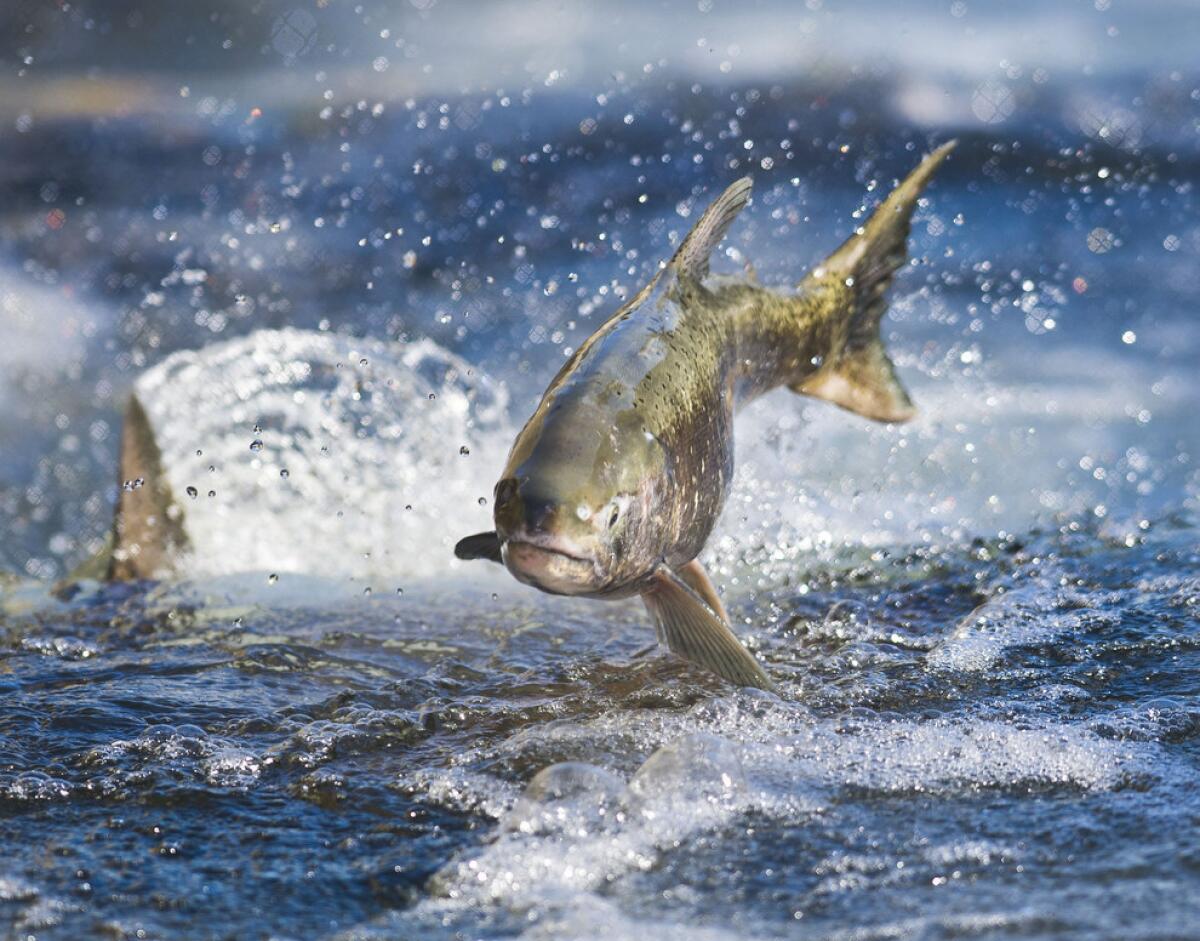This year’s California salmon catch could be the last good one for a while

- Share via
The 2014 California king salmon season that begins May 1 is predicted to be one of the better years recently, despite this winter’s drought. But we’d better enjoy it while we can.
It’s been a long, rocky road for the California salmon. This year, you can take that literally. Because of the severe drought conditions in much of the salmon’s natural habitat, state and federal officials this year started trucking young salmon from their inland spawning grounds to the ocean. The plan is that by the time the program ends, as many as 30 million fish will have hit the road.
But that’s actually a fish story for another year – those immature salmon smolts will have to spend a couple of years in the ocean before they are big enough to harvest. This year’s salmon were the ones who journeyed to sea in 2011, a relatively wet year.
Projections are based on the number of fish biologists estimate are waiting in the ocean to swim back upstream to spawn. This year there are approximately 630,000 salmon off the coast of California from the Sacramento River, which provides the lion’s share of the state’s commercial catch. Estimates are rough and the actual landings can vary widely.
This 2014 projection is substantially less than last year’s, which was more than 860,000, but it’s still better than many in recent history. In fact, in 2008 and 2009, there were so few fish waiting to come back upstream that commercial fishing in California was banned.
“We’re heartened to know we’ll go fishing this year, but the drought has us worried about next year and the year after,” said John McManus, executive director of the Golden Gate Salmon Association, a group of “salmon advocates” including commercial and recreational fishermen, businesses, restaurants and environmentalists among others.
“Drought conditions in the Central Valley rivers continue to harm baby salmon which are now trying to leave the rivers and get to the sea. GGSA is working with state and federal officials to address drought-related problems and hope to have positive results to announce soon.”
As far as the future is concerned, McManus is pessimistic. “This could be the last decent salmon season for a few years,” he said in a statement.
“Next year we’ll start seeing the real cost of the drought on returning adult salmon. It didn’t rain at all in the spring of 2013 when 2015’s fish were babies trying to make it to sea. Conditions were harsh and many were likely killed. Long term, we’ve got to do better as a state managing our water supplies so we don’t leave our salmon high and dry when supplies get tight.”
More to Read
Eat your way across L.A.
Get our weekly Tasting Notes newsletter for reviews, news and more.
You may occasionally receive promotional content from the Los Angeles Times.











